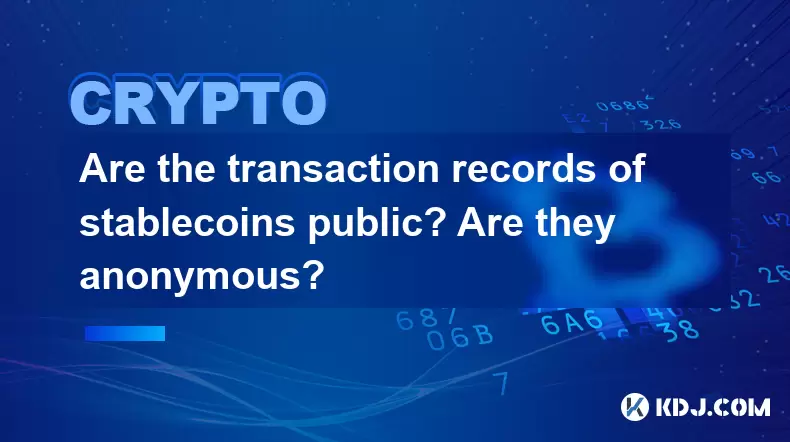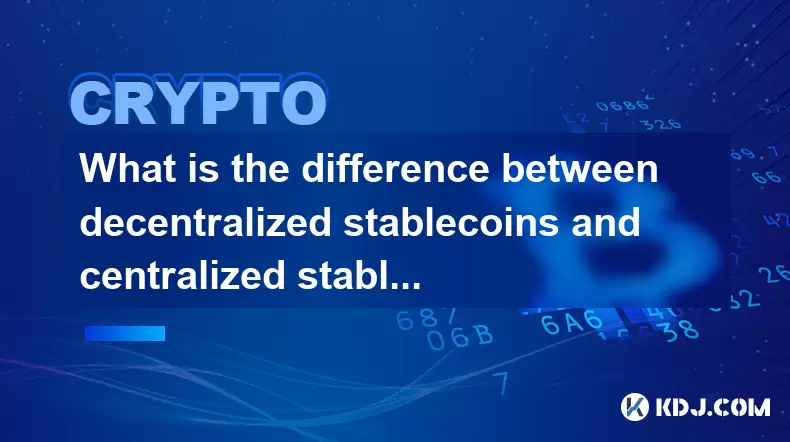-
 Bitcoin
Bitcoin $117900
-2.85% -
 Ethereum
Ethereum $4559
-2.84% -
 XRP
XRP $3.068
-5.67% -
 Tether USDt
Tether USDt $1.000
0.02% -
 BNB
BNB $836.7
-0.81% -
 Solana
Solana $193.2
-2.38% -
 USDC
USDC $0.9998
0.00% -
 TRON
TRON $0.3591
-0.32% -
 Dogecoin
Dogecoin $0.2238
-7.20% -
 Cardano
Cardano $0.9090
4.71% -
 Chainlink
Chainlink $22.55
-4.36% -
 Hyperliquid
Hyperliquid $44.78
-2.41% -
 Sui
Sui $3.771
-4.47% -
 Stellar
Stellar $0.4199
-6.18% -
 Bitcoin Cash
Bitcoin Cash $587.8
-5.02% -
 Ethena USDe
Ethena USDe $1.001
-0.01% -
 Hedera
Hedera $0.2493
-5.06% -
 Avalanche
Avalanche $23.66
-5.54% -
 Litecoin
Litecoin $121.0
-6.80% -
 Toncoin
Toncoin $3.383
-2.39% -
 UNUS SED LEO
UNUS SED LEO $9.287
0.47% -
 Shiba Inu
Shiba Inu $0.00001286
-6.48% -
 Uniswap
Uniswap $10.94
-9.06% -
 Polkadot
Polkadot $3.979
-5.53% -
 OKB
OKB $96.24
-3.88% -
 Dai
Dai $0.9997
0.00% -
 Bitget Token
Bitget Token $4.570
-4.16% -
 Cronos
Cronos $0.1510
-8.87% -
 Ethena
Ethena $0.7251
-6.96% -
 Aave
Aave $310.8
-4.73%
Are the transaction records of stablecoins public? Are they anonymous?
Stablecoin transactions are public on blockchains like Ethereum, offering transparency but varying anonymity based on user practices and blockchain privacy features.
May 17, 2025 at 03:07 pm

Stablecoins have become a cornerstone in the cryptocurrency ecosystem, offering the benefits of digital currencies while maintaining a stable value pegged to traditional assets like the US dollar. One of the key aspects that users often inquire about is the transparency and anonymity of stablecoin transactions. This article delves into the public nature of stablecoin transaction records and the level of anonymity they offer.
What Are Stablecoins?
Stablecoins are a type of cryptocurrency designed to minimize the volatility typically associated with other cryptocurrencies. They achieve this stability by being pegged to a reserve asset, such as the US dollar, gold, or other cryptocurrencies. The most common types of stablecoins are fiat-collateralized, crypto-collateralized, and algorithmic stablecoins. The transparency and anonymity of transactions can vary depending on the type of stablecoin and the blockchain it operates on.
Public Nature of Stablecoin Transaction Records
The public nature of stablecoin transaction records is a fundamental feature of blockchain technology. Most stablecoins, like USDT (Tether) and USDC (USD Coin), operate on public blockchains such as Ethereum or Tron. On these blockchains, all transactions are recorded on a public ledger that anyone can access and audit.
- Viewing Transactions: To view transactions, users can use blockchain explorers like Etherscan for Ethereum-based stablecoins or Tronscan for Tron-based stablecoins. By entering the address of the wallet involved in the transaction, users can see the details of the transaction, including the amount, timestamp, and the addresses involved.
- Transparency Benefits: The public nature of these records provides a high level of transparency, which is beneficial for auditing and verifying the integrity of the stablecoin. It allows users to track the flow of funds and ensures that the stablecoin's reserves are being managed correctly.
Anonymity of Stablecoin Transactions
While the transactions are public, the anonymity of stablecoin transactions can vary. The level of anonymity depends on how the user manages their wallet and the blockchain's privacy features.
- Pseudonymity: Most stablecoin transactions are pseudonymous, meaning that the transactions are linked to wallet addresses rather than real-world identities. This provides a layer of anonymity as long as the wallet address is not linked to the user's identity.
- KYC Requirements: However, many stablecoin issuers and exchanges require Know Your Customer (KYC) verification, which can link wallet addresses to real-world identities. This means that while transactions are pseudonymous on the blockchain, the stablecoin issuer or exchange may have access to the user's personal information.
- Privacy-Focused Blockchains: Some stablecoins operate on privacy-focused blockchains like Zcash or Monero, which offer enhanced anonymity features. These blockchains use technologies like zero-knowledge proofs to obscure transaction details, making it difficult to trace the flow of funds.
How to Maintain Anonymity with Stablecoins
For users who prioritize anonymity, there are several steps they can take to maintain their privacy when using stablecoins.
- Use Non-Custodial Wallets: Instead of using centralized exchanges, users can opt for non-custodial wallets where they have full control over their private keys. This prevents exchanges from linking wallet addresses to personal information.
- Mixing Services: Users can use mixing services or tumblers to obfuscate the trail of their transactions. These services mix the user's coins with others, making it difficult to trace the origin of the funds.
- Privacy-Focused Stablecoins: Choosing stablecoins that operate on privacy-focused blockchains can provide an additional layer of anonymity. For example, using a stablecoin on the Zcash blockchain can make transactions more private.
Regulatory Considerations
The regulatory environment surrounding stablecoins can impact the level of anonymity and transparency. In some jurisdictions, regulations may require stablecoin issuers to maintain detailed records of transactions and user identities, which can reduce the level of anonymity.
- Regulatory Compliance: Stablecoin issuers often need to comply with anti-money laundering (AML) and counter-terrorism financing (CTF) regulations. This can involve collecting KYC information and reporting suspicious transactions to authorities.
- Impact on Anonymity: These regulatory requirements can significantly impact the anonymity of stablecoin transactions. Users should be aware of the regulatory environment in their jurisdiction and how it may affect their privacy.
Practical Example: USDT on Ethereum
To illustrate the public nature and anonymity of stablecoin transactions, let's consider USDT on the Ethereum blockchain.
- Public Transaction Records: USDT transactions on Ethereum are recorded on the Ethereum blockchain and can be viewed using Etherscan. For example, if a user sends 100 USDT from one wallet to another, this transaction can be seen by anyone using the blockchain explorer.
- Anonymity Considerations: The wallet addresses involved in the transaction are pseudonymous. However, if the user has completed KYC verification on an exchange, the exchange may be able to link the wallet address to the user's identity. To maintain anonymity, the user could use a non-custodial wallet and a mixing service to obscure the transaction trail.
Frequently Asked Questions
Can I track the total supply of a stablecoin through public records?
- Yes, the total supply of a stablecoin can often be tracked through public blockchain records. For example, on Ethereum, you can use tools like Etherscan to view the total supply of USDT or USDC by examining the smart contract associated with the stablecoin.
Are there any stablecoins that offer complete anonymity?
- Some stablecoins, like those on the Zcash blockchain, offer enhanced anonymity through zero-knowledge proofs. However, even these stablecoins may not provide complete anonymity if users interact with centralized services that require KYC.
How can I verify the reserves backing a stablecoin?
- Many stablecoin issuers publish regular reserve reports to demonstrate the backing of their stablecoin. Additionally, third-party audits and the transparency of blockchain transactions can provide further verification of the reserves.
What should I do if I suspect fraudulent activity involving stablecoins?
- If you suspect fraudulent activity, you should report it to the stablecoin issuer and any relevant authorities. Additionally, using blockchain explorers to track the suspicious transactions can provide valuable evidence for investigations.
Disclaimer:info@kdj.com
The information provided is not trading advice. kdj.com does not assume any responsibility for any investments made based on the information provided in this article. Cryptocurrencies are highly volatile and it is highly recommended that you invest with caution after thorough research!
If you believe that the content used on this website infringes your copyright, please contact us immediately (info@kdj.com) and we will delete it promptly.
- Kazakhstan's Crypto Leap: Bitcoin ETF and Central Asia's Digital Finance Future
- 2025-08-13 12:45:19
- BlockDAG Presale Blazes Past $371M: Fundraising Frenzy Fuels Crypto Sensation
- 2025-08-13 13:05:21
- Meme Coins: Chasing the 2025 Surge – Which Will Moonshot?
- 2025-08-13 10:25:23
- Bitcoin's Wild Ride: Rally, Pullback, and What's Next
- 2025-08-13 10:25:23
- Bitcoin, Bitmax, and Institutional Demand: A New Era of Crypto Investment
- 2025-08-13 10:45:12
- Solana, ROAM, and Airdrops: What's the Buzz in 2025?
- 2025-08-13 11:35:13
Related knowledge

What is the difference between decentralized stablecoins and centralized stablecoins? Pros and cons comparison
Jun 15,2025 at 09:42am
What Are Stablecoins and Why Do They Matter?Stablecoins are a category of cryptocurrencies designed to maintain a stable value, usually pegged to an e...

What is the role of stablecoins in DeFi? Advantages and limitations analysis
Jun 14,2025 at 06:28am
Understanding Stablecoins in the DeFi EcosystemStablecoins play a pivotal role in the decentralized finance (DeFi) landscape by providing a bridge bet...

How do algorithmic stablecoins work? Potential risks and market impact
Jun 12,2025 at 02:07pm
Understanding Algorithmic StablecoinsAlgorithmic stablecoins are a type of cryptocurrency designed to maintain a stable value relative to a specific a...

How do stablecoins anchor legal currencies? Technical and economic model analysis
Jun 16,2025 at 08:43am
Understanding the Concept of StablecoinsStablecoins are a category of cryptocurrencies designed to maintain a stable value relative to a specific asse...

How do stablecoins maintain price stability? Principles and risk analysis
Jun 11,2025 at 12:01am
Understanding the Mechanisms Behind Stablecoin StabilityStablecoins are a category of cryptocurrencies designed to minimize price volatility, often pe...

What is the operating mechanism of stablecoins? In-depth exploration of its stability principle
Jun 10,2025 at 09:28pm
Understanding the Core Concept of StablecoinsStablecoins are a unique category within the cryptocurrency market, designed to address one of the most s...

What is the difference between decentralized stablecoins and centralized stablecoins? Pros and cons comparison
Jun 15,2025 at 09:42am
What Are Stablecoins and Why Do They Matter?Stablecoins are a category of cryptocurrencies designed to maintain a stable value, usually pegged to an e...

What is the role of stablecoins in DeFi? Advantages and limitations analysis
Jun 14,2025 at 06:28am
Understanding Stablecoins in the DeFi EcosystemStablecoins play a pivotal role in the decentralized finance (DeFi) landscape by providing a bridge bet...

How do algorithmic stablecoins work? Potential risks and market impact
Jun 12,2025 at 02:07pm
Understanding Algorithmic StablecoinsAlgorithmic stablecoins are a type of cryptocurrency designed to maintain a stable value relative to a specific a...

How do stablecoins anchor legal currencies? Technical and economic model analysis
Jun 16,2025 at 08:43am
Understanding the Concept of StablecoinsStablecoins are a category of cryptocurrencies designed to maintain a stable value relative to a specific asse...

How do stablecoins maintain price stability? Principles and risk analysis
Jun 11,2025 at 12:01am
Understanding the Mechanisms Behind Stablecoin StabilityStablecoins are a category of cryptocurrencies designed to minimize price volatility, often pe...

What is the operating mechanism of stablecoins? In-depth exploration of its stability principle
Jun 10,2025 at 09:28pm
Understanding the Core Concept of StablecoinsStablecoins are a unique category within the cryptocurrency market, designed to address one of the most s...
See all articles

























































































